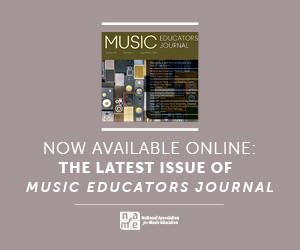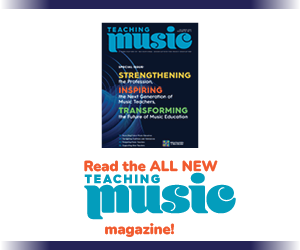/ News Posts / As the Shutdown Ends, the Push for Arts Education Funding Continues
As the Shutdown Ends, the Push for Arts Education Funding Continues
By Amber Friel, NAfME Communications Manager, Advocacy and Public Policy
After 43 days of uncertainty, the longest government shutdown in U.S. history has finally come to an end. With federal operations resuming, the door for critical education and budget discussions has been reopened after weeks of halted progress.
While the full impact on music and arts education funding is still unfolding, Congress is now back at the table to finalize the FY 2026 budget—decisions that will be critical to the future of programs supporting a well-rounded education for every student.
Temporary Relief
The funding package that reopened the government includes a Continuing Resolution (CR), which temporarily extends federal funding at FY 2025 levels for education and other programs. This stopgap measure runs through January 30, giving Congress a short window to approve full-year appropriations or agree on another short-term extension.
The bill also restores U.S. Department of Education staff who received “reduction in force” notices during the shutdown and temporarily prevents mass layoffs across federal agencies. These measures bring much-needed short-term stability, but they also set a tight deadline for lawmakers to finalize the FY 2026 Labor–HHS–Education appropriations bill, a key source of K–12 and higher education funding.
For programs like Head Start, which supports low-income families and lost grant funding at more than 100 centers during the shutdown, this restoration of funding is especially significant. In addition, the Department of Education can now resume grantmaking, and its Office for Civil Rights can continue reviews and investigations that were paused for over a month.
What’s at Stake for Arts Education
Even with this progress, the relief is only temporary. Upcoming budget debates, expected to begin as soon as this week, will determine whether essential programs that sustain music and arts education continue at current levels or face devastating cuts for the 2026–27 school year.
A comparison of FY 2025 and proposed FY 2026 funding for key programs shows what’s at stake:
| Program Title | FY 2025 Funding | FY 2026 Trump Budget Proposal | FY 2026 Senate Committee Bill | FY 2026 House Committee Bill |
| Title I | $18.41 B | $18.4 B | $18.5 B | $14.6 B |
| IDEA | $14.213 B | $14.213 B | $14.263 B | $14.289 B |
| Title IV-A | $1.380 B | $0 | $1.380 B | $1.385 B |
| 21st Century Community Learning Centers | $1.33 B | $0 | $1.33 B | $1.33 B |
| Title II | $2.19 B | $0 | $2.19 B | $0 |
| Assistance for Arts Education | $36.5 M | $0 | $31.5 M | $0 |
For arts educators, this moment serves as a renewed call to action. Programs like Title I, Title II, Title IV-A, and the Assistance for Arts Education program are lifelines that ensure students have equitable access to music and arts opportunities. With only temporary funding secured, the next few months will determine whether these programs remain strong or face budget cuts that could limit creative opportunities for students across the country.
How to Get Involved
As Congress prepares to debate these funding levels, arts educators and advocates have an important opportunity to help shape the conversation. Through the Arts Education Alliance’s Federal Funding Campaign, you can share your personal story of how federal support has strengthened your program, your district, or your community. Whether it’s a music program revitalized by Title IV-A funds or an arts curriculum made possible through an Assistance for Arts Education grant, these stories help lawmakers see what’s truly at stake.
Take a moment to contact your members of Congress to amplify the voices of arts education advocates in this pivotal budget conversation.
Arts educators and leaders can also contribute valuable insights through the recently launched Federal Funds Survey, a collaboration between the Arts Education Alliance and NAMM’s SupportMusic Coalition. This survey collects data on how districts used federal funds to support arts education during the 2024–25 school year. Sharing your school’s experiences helps show the impact of these investments and where additional support is needed.
Contribute your insights before January 16 (deadline extended) to help strengthen our case for continued and expanded federal funding.
Looking Ahead
The end of the shutdown is a relief, but it also marks the beginning of a crucial chapter in federal education policy. Decisions made in the coming months will determine whether music and arts education are recognized as essential to every child’s learning or risk being sidelined by budget cuts.
Through continued advocacy, shared stories, and data, arts education advocates can help build a future where equitable access to the arts is recognized as essential to a well-rounded education for all students.
Interested in reprinting this article? Please review the reprint guidelines.
Published Date
November 17, 2025
Category
- Advocacy
- Federal Advocacy & Public Policy
Copyright
November 17, 2025. © National Association for Music Education (NAfME.org)




